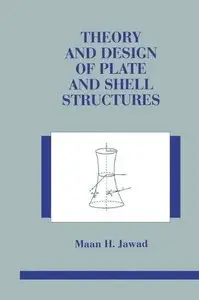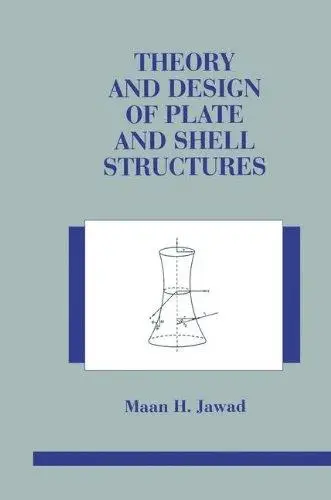Theory and Design of Plate and Shell Structures By Maan Jawad
1994 | 434 Pages | ISBN: 1461361419 , 0412981815 | PDF | 11 MB
1994 | 434 Pages | ISBN: 1461361419 , 0412981815 | PDF | 11 MB
The design of many structures such as pressure vessels, aircrafts, bridge decks, dome roofs, and missiles is based on the theories of plates and shells. The degree of simplification needed to adopt the theories to the design of various structures depends on the type of structure and the re quired accuracy of the results. Hence, a water storage tank can be satis factorily designed using the membrane shell theory, which disregards all bending moments, whereas the design of a missile casing requires a more precise analysis in order to minimize weight and materials. Similarly, the design of a nozzle-to-cylinder junction in a nuclear reactor may require a sophisticated finite element analysis to prevent fatigue failure while the same junction in an air accumulator in a gas station is designed by simple equations that satisfy equilibrium conditions. Accordingly, this book is written for engineers interested in the theories of plates and shells and their proper application to various structures. The examples given throughout the book subsequent to derivation of various theories are intended to show the engineer the level of analysis required to achieve a safe design with a given degree of accuracy. The book covers three general areas. These are: bending of plates; membrane and bending theories of shells; and buckling of plates and shells. Bending of plates is discussed in five chapters. Chapters 1 and 2 cover rectangular plates with various boundary and loading conditions.



